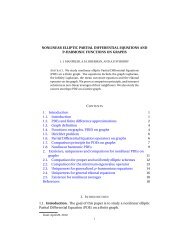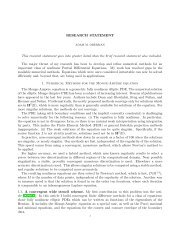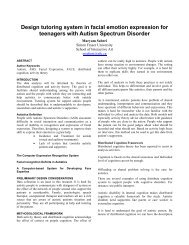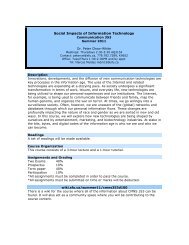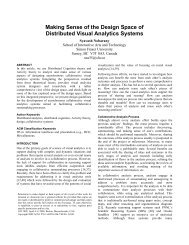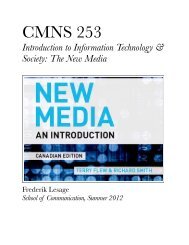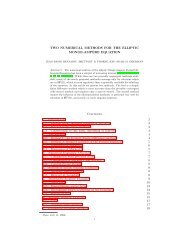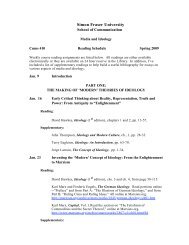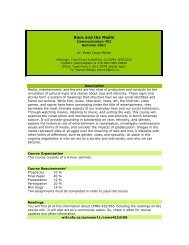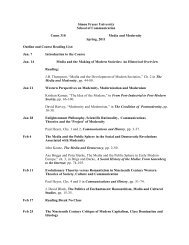CMNS 253 Syllabus - SFU Wiki
CMNS 253 Syllabus - SFU Wiki
CMNS 253 Syllabus - SFU Wiki
You also want an ePaper? Increase the reach of your titles
YUMPU automatically turns print PDFs into web optimized ePapers that Google loves.
Critical Consumption ("Crap Detection")Critical consumption, or what Ernest Hemingway called "crap detection," is the literacy oftrying to figure out what and who is trustworthy—and what and who is not trustworthy—online.If you find people, whether you know them or not, who you can trust to be an authority onsomething or another, add them to your personal network. Consult them personally, consult whatthey've written, and consult their opinion about the subject.The authority of the text that goes back at least a thousand years has been overturned. In thepast we could go to the library and take out a book to read; we might disagree with the book, butprobably somebody, or several somebodies, had been paid to check the factual claims in the book.When we get information online today, there is no guarantee that it's accurate or even that it's nottotally bogus. The authority is no longer vested in the writer and the publisher. The consumer ofinformation has to be a critic and has to inquire about the reality of the information presented.How do we do that? The first step isn't that hard. We ask the primary questions: Who is theauthor, and what do other people say about that author? We put the author's name in a searchengine, keeping our critical glasses on. So step one is knowing how to ask that question, knowinghow to query the search engine. Next, who are the people who give opinions about the author?What are the author's sources? Who links to the author? This second step is trickier. Basically,how do we know that what we find is accurate? We all have to be detectives these days.[13]Finally, crap detection takes us back, full circle, to the literacy of attention. When I assign mystudents to set up an RSS reader or a Twitter account, they panic. They ask how they aresupposed to keep up with the overwhelming flood of information. I explain that social media isnot a queue; it's a flow. An e-mail inbox is a queue, because we have to deal with each message inone way or another, even if we simply delete them. But no one can catch up on all 5,000 or sounread feeds in their RSS reader; no one can go back through all of the hundreds (or thousands)of tweets that were posted overnight. Using Twitter, one has to ask: "Do I pay attention to this?Do I click through? Do I open a tab and check it out later today? Do I bookmark it because Imight be interested in the future?" We have to learn to sample the flow, and doing so involvesknowing how to focus our attention.InterconnectionJust as the print technologies and literacies shaped the Enlightenment, the social mediatechnologies and literacies will shape the cognitive, social, and cultural environments of the 21stcentury. As Jenkins and his colleagues have emphasized, education that acknowledges the fullimpact of networked publics and digital media must recognize a whole new way of looking atlearning and teaching. This is not just another set of skills to be added to the curriculum.Assuming a world in which the welfare of the young people and the economic health of a societyand the political health of a democracy are the true goals of education, I believe modernsocieties need to assess and evaluate what works and what doesn't in terms of engaging studentsin learning.



